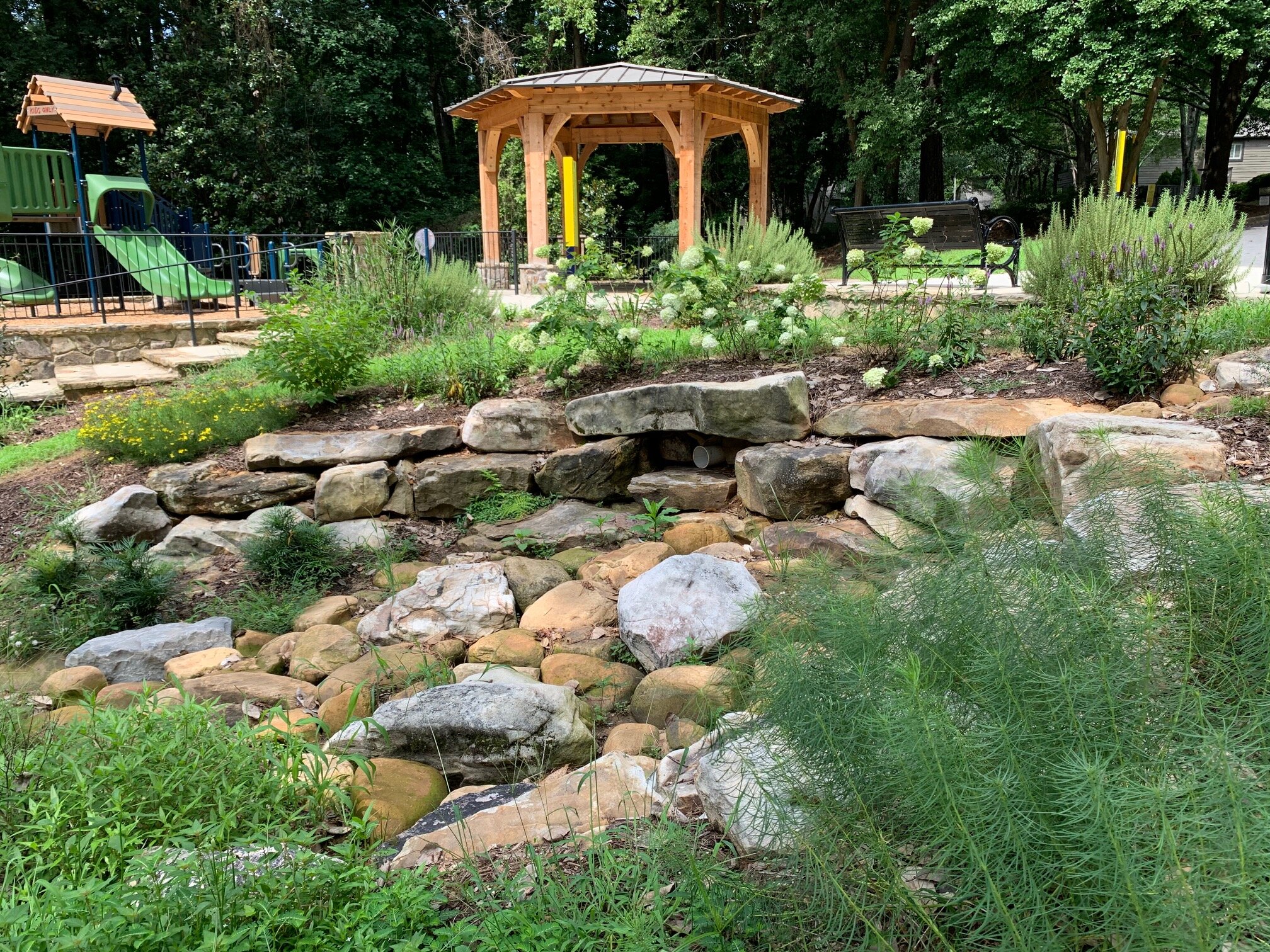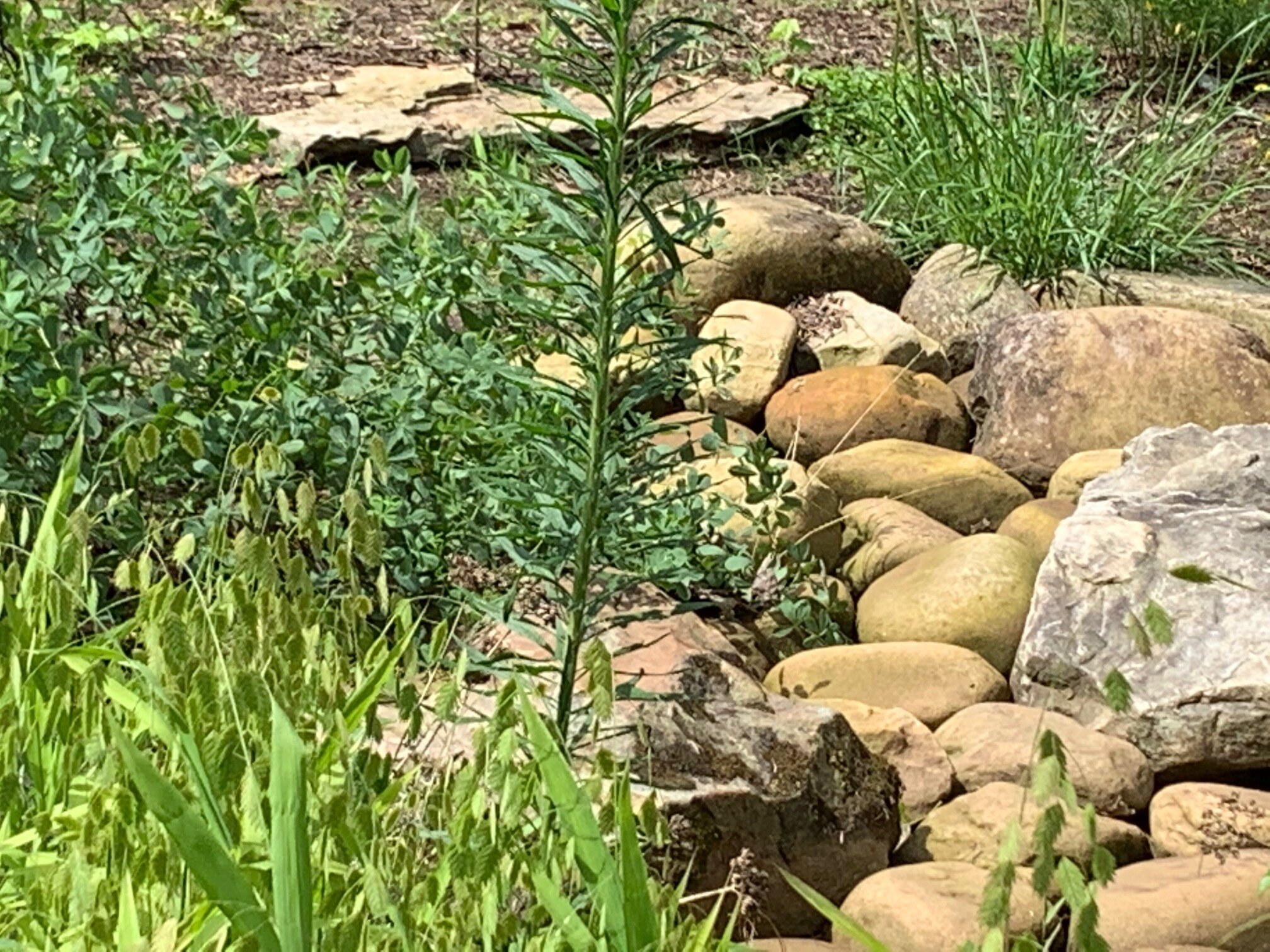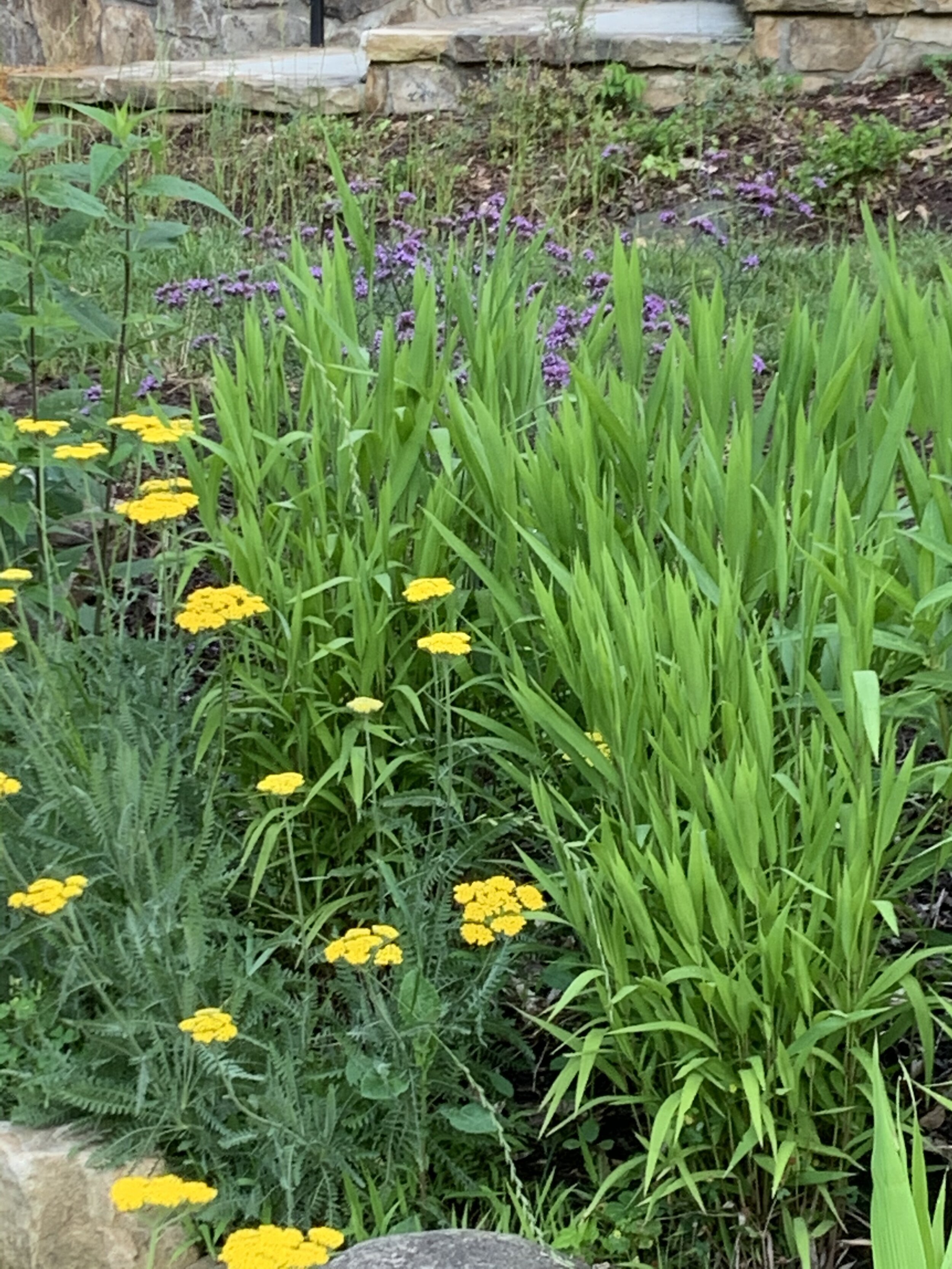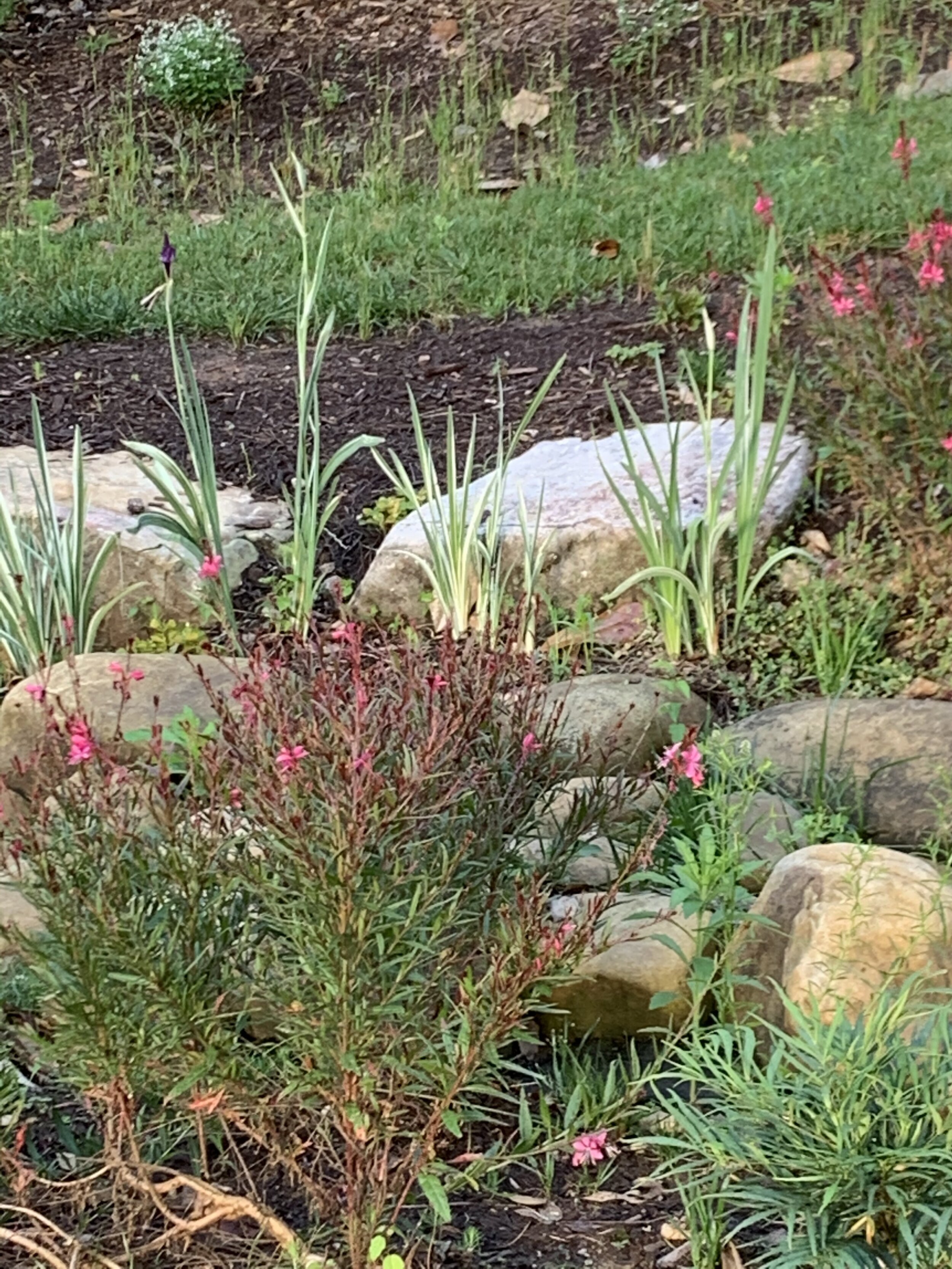By Sally Sears
Wild iris, native and blue, smiled on the far bank of the Floataway pond. We planted a few as a Morningside neighbor’s gift and watched the plants thrive in the damp meadow at Zonolite Park. Blue Flag Iris (Iris virginica) spread quickly along the edges of the water, raising bright flags of true sky blue on top of sharp blue green leaves.
So imagine my wonder, turning to dismay the next year when they came back yellow instead of blue. I couldn’t believe my eyes. My iris eyes were looking at Blue Iris and seeing yellow. What had happened? Vivid yellow, bright as goldenrod, floated on top of the sharp leaves. Nothing blue in sight.
Yeoman Pete Densmore, head of the Friends of Zonolite Park, had put volunteers to work all that year yanking out cattails. Nobody wanted a pond full of cattails because they hid the pond surface and crowded out a range of birds. The removal was terrific, but I wondered if the yanking had somehow turned the nearby iris from blue to yellow.
My smart garden friends shrugged off my question. They of course wanted to see for themselves. A few weeks later, we came back. And to my amazement, the iris were blue again. Just as I remembered from the year before. Was I looking through lying eyes?
My gardening friends were amused and slightly condescending. Now, Sally, anybody can mistake yellow for blue, of course! Just enjoy how the hummingbirds are liking the iris.I burned inside. Lying Eyes? When Iris Eyes are Not Smiling!
I turned to the internet in a frenzy burning with humiliation. The very word iris means all colors. The Greek goddess of the rainbow is named Iris. The color of our eyes is the color of our own iris. This was not helping much. This year I went early in April, staring at the plants on the near side of the pond, daring the flowers to show up, wild to figure out if I am in fact crazy. I am not crazy. The buds starting to unfurl were yellow again.
Driving through Morningside I saw the same yellow iris in dozens of yards, beside mailboxes, in tidy gardens. Not a blue flag iris anywhere. All April I watched the yellow iris spread a buttery scarf along the pond edge. I bided my time.
In May, my crazy color mystery began to be resolved. On May Day, dozens of blue iris bloomed. A month ahead of the blue flag iris, a yellow European cousin (Iris pseudacorus) is enjoying the same habitat. The yellow iris can be a bit pushy, but both are thriving, both good for pulling pollutants out of the storm water pond.
And both are smiling treats for all of our iris eyes.








